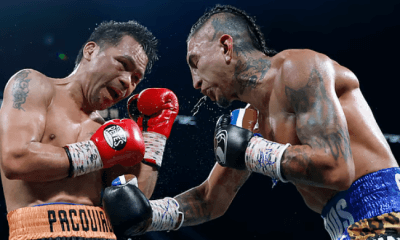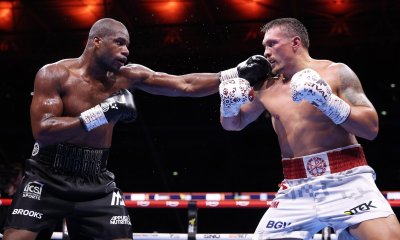Featured Articles
OUT OF THE PAST

The Italianate courtyard of the Boston Public Library is a secret place for scholars and students. It is modeled after Rome’s Palazzo della Cancelleria with its marble arches and stone corridors forming a square of sixteenth century masonry. There’s a vision rising out of the fountain in the center –a nude sculpture called Bacchante and Infant Faun. Condemned during the Victorian era, it depicts wanton revelry in honor of the god of wine.
On Thursday, I sat on one of the ornate chairs before an ornate table and gazed upon another vision –this one fully clothed and at study. Torrents of ash blonde hair kept spilling forward over her open book. She’d throw it over a shoulder. It fell again. She tucked it behind an ear. It untucked and launched itself back onto the page. The fifth time she threw it back, she bristled. I was tickled. When she packed her things and arose out of her chair like a bacchante in a blue dress, she glanced my way. To my dismay, she turned and went in the wrong direction. I watched her go and then watched her turn back toward (what I deemed) destiny’s direction. There were about six steps between us –which meant that I had about six seconds to find words that struck a balance between confident and cute. As it happened nothing happened. She breezed by my nonchalant pose and gave me a look as if my zipper was down. Unfortunately, it was.
Boston has many secret places that only the locals know, and a storied past at every corner –but you won’t find either if you ignore the proverbial warnings about driving in this city. You’d be better off on a horse. This city wasn’t planned on a grid like New York or Washington; it wasn’t planned at all. Ralph Waldo Emerson said that cows did the urban planning and he wasn’t wrong enough. “In Boston town of old renown,” an old postcard reads, “the gentle cows the pathways made, which grew to streets that keep strangers quite dismayed.”
It is best explored on foot.
After a wardrobe adjustment and few minutes repairing chipped pride, I left the Palazzo and strolled through the ritzy Back Bay. The Mechanics Building stood around the corner on Huntington Avenue and hosted hundreds of boxing matches. One of them involved Harry Greb and Kid Norfolk in 1924. It ended after the referee disqualified the wrong guy, at least according to the menacing crowd that almost tore the walls down. The match was trumpeted by the dailies as “the fastest and most curious contest ever in a Boston ring.” In 1959 the building was razed to make way for the Prudential Plaza …to make way for placid modernity:
The spot where Greb and Norfolk brawled like sailors is now a reflecting pool.
I walked down Boylston Street toward what was once the Combat Zone, past the site of the Gilded Cage, a strip club managed in the sixties by a former champion from the twenties named Johnny Wilson.
Born Giovanni Panica, Wilson was a Sicilian-American out of Charlestown and never out of connections –with friends like mob bosses Frank Costello and Al Capone why should he be? For three years he ducked Greb to stay connected to his tainted crown. When Greb finally cornered him, he hammered Wilson’s “overhanging nose” for fifteen rounds and took that crown. Another middleweight named Jock Malone was confident that he could do to Wilson what Greb did; so confident, in fact, that he promised the press that he would jump into Boston Harbor if he lost. Wilson knocked him out. The next day, a crowd of thousands gathered at the Charlestown Bridge to see if he’d keep his word. Malone was there on time. He climbed over the railing and posed for a moment fully dressed and wearing a straw hat. “I owe Wilson a splash!” he called out before plunging fifty feet into the brine. Boston cheered as he swam ashore and triumphantly hopped into a waiting car.
Wilson lost five of his next seven and hung up the gloves. He ran a speakeasy during Prohibition and got adjusted to cigars and sleeping til noon. By the time I arrived on the scene, he was pushing 80 and still had his hair parted down the middle, black and slicked back –Roaring Twenties style. In the evening he’d have a glass of burgundy, light up a cigar, and walk these same streets for hours on end, reminiscing.
I went left at Boylston Square, maneuvering my way through artsy types and Emerson students in flip-flops. The Paramount Theatre approached out of the past.
When it was built during the Hoover administration, the Paramount was a movie house –one of the first of its kind, all class. By the time Nixon got in, it was a dilapidated creep joint, all crass. The only white guys at this end of Washington Street wore raincoats; the rest didn’t even pretend to be part of civil society. Sharp ones with sharp eyes scanned for easy marks. The broken ones lay down in dark corners. By the eighties they were lying around on the sidewalks too. Young hoodlums like this one couldn’t even maintain a respectable swagger without stepping over them.
The Paramount reopened last year –all class once again. A seven thousand bulb marquee lights up Washington Street like a dream, like a great comeback.
As the evening sky turned orange and then dimmed, I was in the North End –the old Italian enclave a stone’s throw from Faneuil Hall. The Fisherman’s Feast, a tradition brought from Sicily to these shores a hundred years ago, was beginning. A crowd was carrying a statue of the Madonna down to Christopher Columbus Park to bless the fishing waters. Heralded by a marching band, the procession winded its way back to a chapel where the statue rested. Green, white, and red confetti littered byways lined with carts hawking salsicce, arancini, pizza, and –best of all– cannoli from Mike’s Pastry. A gypsy offered handwriting analysis. A master of ceremonies sat in a booth and heckled the yuppies who didn’t buy raffle tickets. “You wit tha green shirt, buy a raffle ticket… Where you goin’? Where you goin’?”
Local boxing legend Tony DeMarco was there –it was his night.
Unlike fellow Siciliano Johnny Wilson, DeMarco was born right here, on Fleet Street. Way back in ’55 he became one of the shortest welterweight champions in history with one of the longest nicknames –“Short, Dark, and Harmful.” He lost his title to a fiercer Italian in Carmen Basilio though he never lost his friends. They all came out this evening to see him honored by the Madonna del Soccorso di Sciacca Society as the “Italian-American of the Year.” He climbed the stairs onto a makeshift stage as if it was a ring and carried a water bottle in his hand. He’s pushing 80 now, and the busted beak and heavy scarring around the brows told me he got off easy. There were no signs of impairment, no sobering reminders of those twenty-four rounds with Basilio that would have killed lesser men.
When he took the microphone he offered no war stories. He spoke instead of love and friendship. His father was from the fisherman’s town of Sciacca in Sicily, his mother was too (“God bless her soul”), so this feast is close to his heart. “I know they see me now,” he said as tears welled up, “I am as proud to receive this award as I was when I became welterweight champion of the world.”
His arms spread wide as if to embrace the cheering crowd. Camera phones clicked where once flashbulbs exploded.…
It was getting late when I sat on an ornate chair before an ornate table in front of Caffe Vittoria. Hanover Street still bustled with tourists looking for secret places and hints of the North End’s storied past. I sipped espresso. Boston is a sentimental city, I mused. It’s a city that holds onto yesterday so tightly that even its new glories are often old glories restored, if only for a night.
With that, I walked back toward Boylston Square …and wished I had a cigar.
……Image via c21rooney on Flickr. Contemporary fight reports involving Greb can be found on Bill Paxton’s website: harrygreb.com; Details about Johnny Wilson in 1970 from Bud Collins’ “Portrait of an Ex-Champ” (Boston Globe 11/15/70); Jock Malone’s dive off the Charlestown Bridge reported by the Boston Daily Globe 8/1/24 (“Malone Leaps 50 Feet Into The Harbor, Big Crowd Watching”). DeMarco’s ascension to the title is also reported by the Globe, 4/2/1955 (“DeMarco Wins Welter Crown; TKO Victor Over Saxton In 14th”)…..
…Tony DeMarco’s autobiography, Nardo: Memoirs of a Boxing Champion (written with Ellen Zappala) has just been released. Order it soon and he’ll sign it….
Springs Toledo may be contacted at scalinatella@hotmail.com.
-

 Featured Articles3 weeks ago
Featured Articles3 weeks agoThe Hauser Report: Zayas-Garcia, Pacquiao, Usyk, and the NYSAC
-

 Featured Articles2 weeks ago
Featured Articles2 weeks agoOscar Duarte and Regis Prograis Prevail on an Action-Packed Fight Card in Chicago
-

 Featured Articles1 week ago
Featured Articles1 week agoThe Hauser Report: Cinematic and Literary Notes
-

 Book Review6 days ago
Book Review6 days agoMark Kriegel’s New Book About Mike Tyson is a Must-Read
-

 Featured Articles4 weeks ago
Featured Articles4 weeks agoManny Pacquiao and Mario Barrios Fight to a Draw; Fundora stops Tim Tszyu
-

 Featured Articles4 weeks ago
Featured Articles4 weeks agoArne’s Almanac: Pacquiao-Barrios Redux
-

 Featured Articles3 weeks ago
Featured Articles3 weeks agoRemembering Dwight Muhammad Qawi (1953-2025) and his Triumphant Return to Prison
-

 Featured Articles4 weeks ago
Featured Articles4 weeks agoOleksandr Usyk Continues to Amaze; KOs Daniel Dubois in 5 One-Sided Rounds














